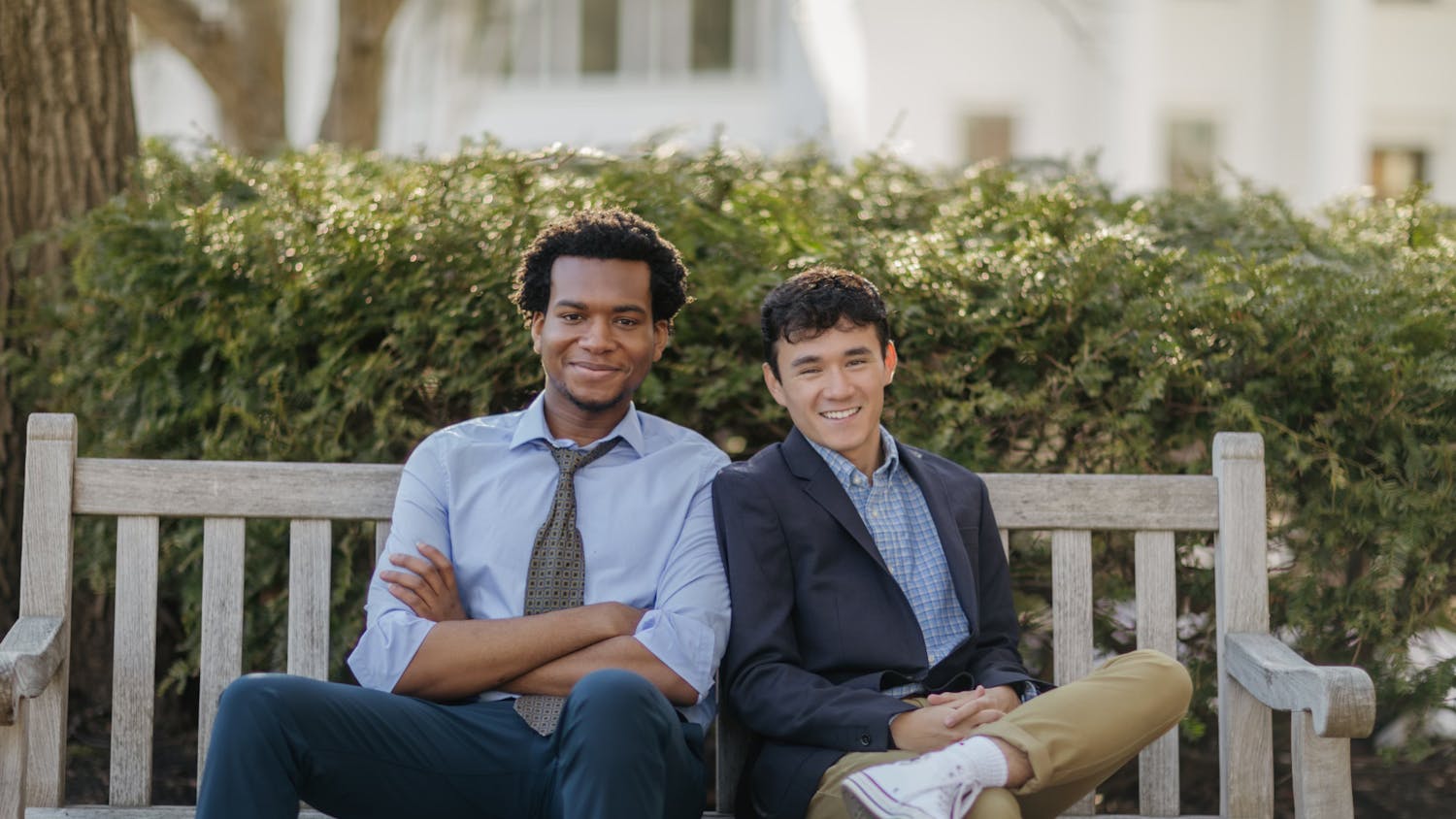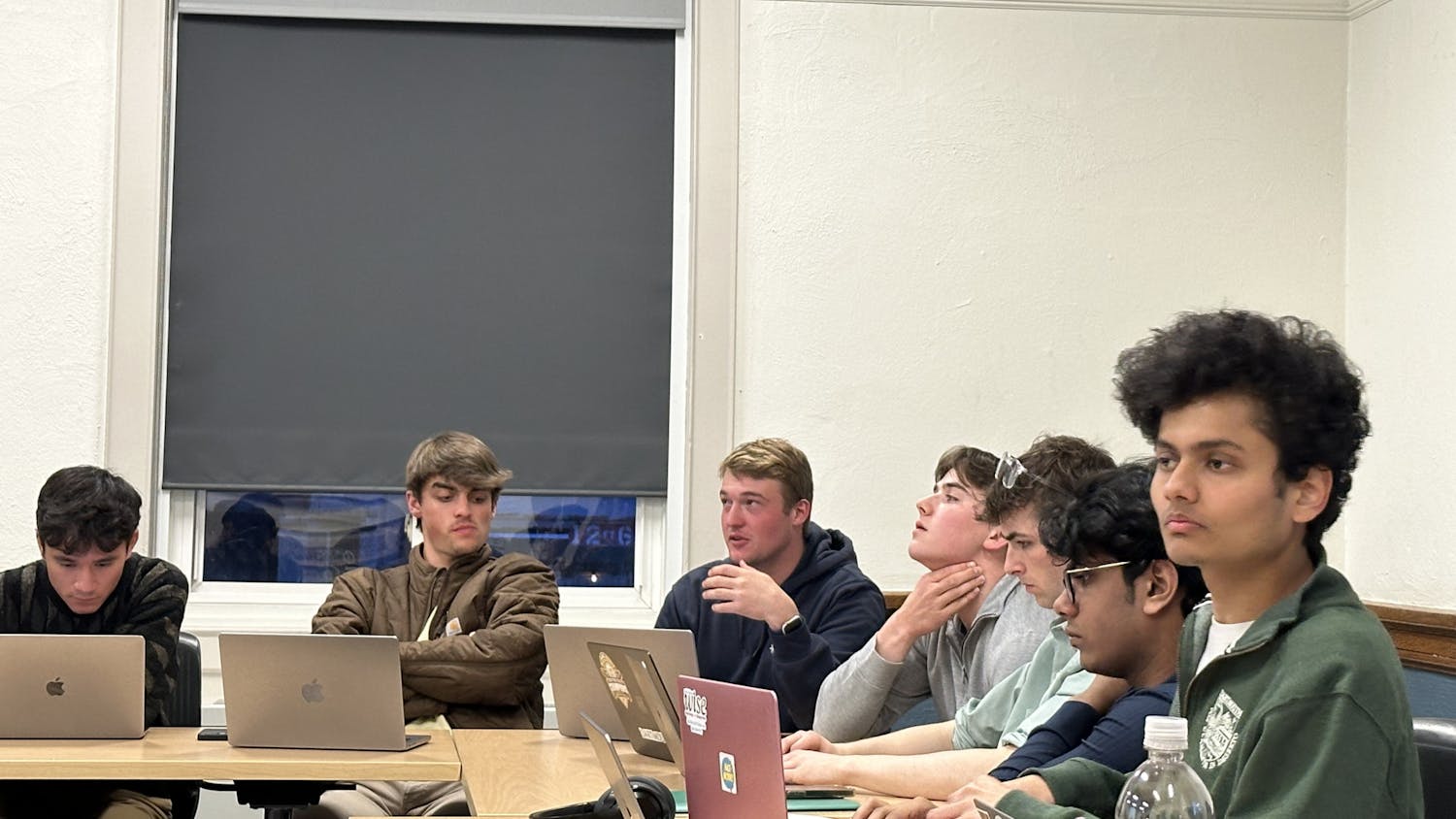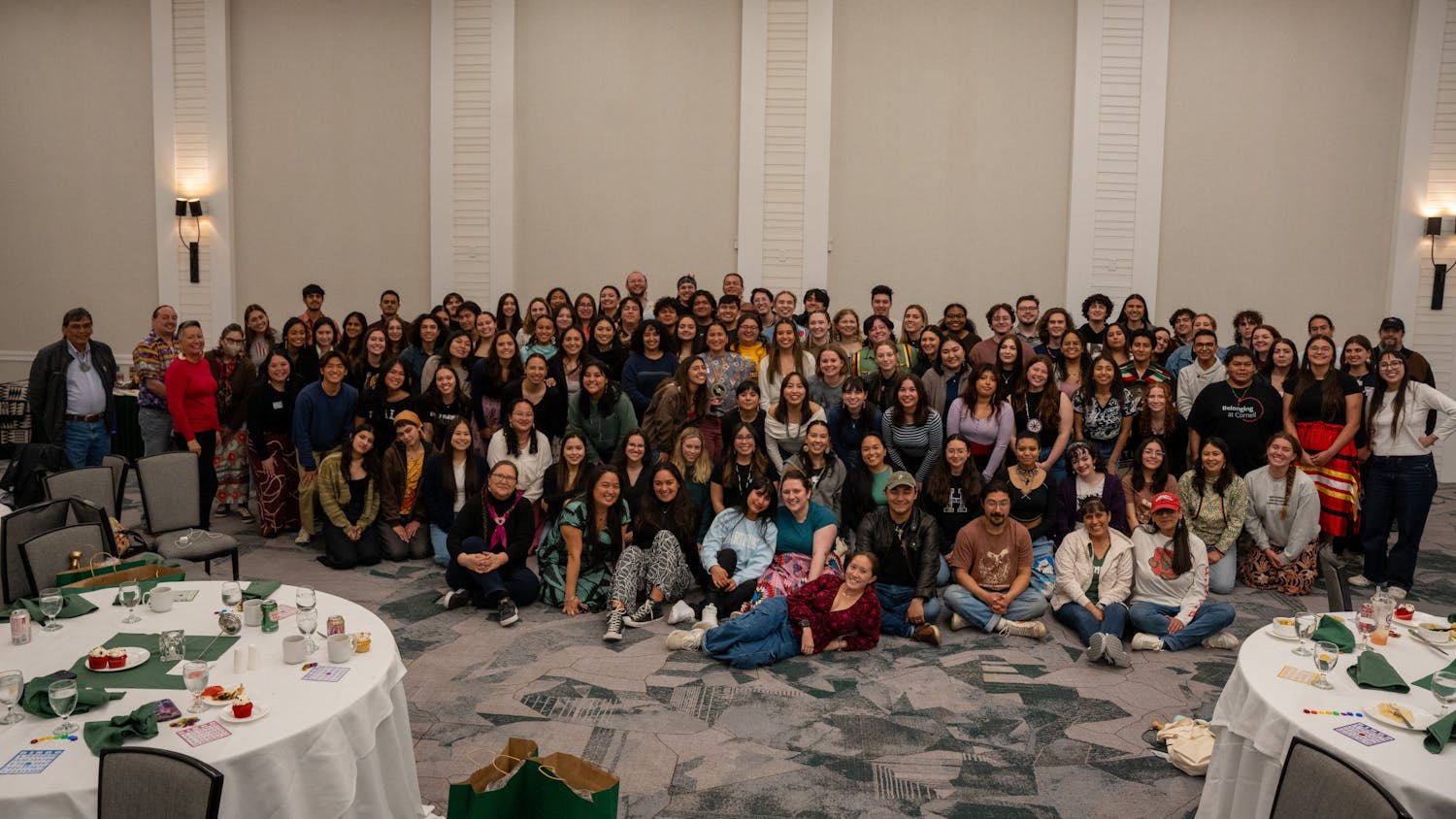On Tuesday, the two last community forums were held to discuss the community study and diversity working groups, the reports of which were released earlier this month. Issues raised included the recent “Blue Lives Matter” bulletin board controversy and challenges faced by faculty, staff and students of color. These forums served as the final opportunities for community feedback before the executive committee report is released at the end of the week.
The executive committee that will be issuing this report consists of College President Phil Hanlon, executive vice president Rick Mills and vice president for Institutional Diversity and Equity Evelynn Ellis.
Hanlon, Mills and vice provost for academic initiatives Denise Anthony were in attendance at the first forum held at 8 a.m., while Anthony, Mills, Provost Carolyn Dever and vice provost for student affairs Inge-Lise Ameer were present at the 1 p.m. forum. Each of the two events had about 150 attendees.
In the morning forum, Anthony began by explaining the “what, how and why” of the community study and presented many of the initial, high-level findings. “Lack of a sense of belonging” was one of the main reasons that respondents to the survey who said they have considered leaving the College in the past gave. Rankin and Associates said this reason does not usually come up in the top five reasons at other institutions.
Mills said that the three diversity and inclusive excellence working groups created in the winter had a “remarkable, but perhaps unsurprising, confluence of recommendations.”
“Dartmouth has been talking about this for decades and there have been more than 40 reports prior about things that Dartmouth could do,” he said. “The role of the inclusive excellence effort is to move from decades of reports to immediate action.”
A female student asked Hanlon why he cancelled office hours for students and faculty for the remainder of the term, to which he replied that on Friday, he hosted faculty and staff office hours, while the prior Tuesday, he met with people he had not gotten a chance to speak to the week before.
Art history professor Mary Coffey said that because of efforts to have gender equity in College faculty committees, “the percentages of women and men in our faculty are so skewed that there are people who are consistently serving on committees over and over again, while a huge percentage of male faculty do almost no committee work.”
Coffey said that she would recommend sensitivity and bias training not just for searches and members of the CAP, but “across the board, including upper administration,” adding that administration is “probably worse than faculty when it comes to diversity statistics.”
She also said that she has seen several cases of faculty and students being disrespectful to staff members on campus and that staff members are often working 60-hour weeks on a 30-hour paycheck.
“The staff compensation budget is so small that they barely get a nominal raise,” Coffey said, adding that the imbalance between the work that staff do and the compensation they receive may have contributed to the large number of staff who responded to the campus climate survey.
However, Coffey said that many staff members are afraid to speak out and feel unsafe expressing their views. There needs to be a mechanism for staff to raise their concerns without worrying that they will be fired or reallocated in some way, she said.
Coffey also said that the administration should begin generating transparent statistics about retention and promotion, broken down into several metrics that separate each individual into categories such as U.S. national, international and under-represented minority.
“It’s not just about tracking how many we have in each category, but what is the rate of promotion, because that is a piece of information that at least I can’t find,” she said.
Hanlon said that workload balance is one of the key challenges facing faculty that the College needs to address and that he agreed with the need to make statistics available to the public.
“The word ‘transparency’ is easy to say and hard to follow up on, but true transparency delivered to this community would be incredibly powerful,” Mills said, adding that the executive committee hopes to use transparent methods to hold itself accountable to the College.
Hanlon added that the many staff cuts following the 2008 recession were in part caused by the College’s unpreparedness, but that since then, the institution has been making efforts to ensure that it will be ready to face the next recession.
A female student in the audience asked how the College’s budget will be restructured to prioritize diversity and inclusion.
Mills said that this information will be included in the executive committee report.
A male member of the audience said that the College is a racist institution.
“Dartmouth administration is racist and Dartmouth is built on racism,” he said. “People of color are not statistics, we’re people and our voices should be heard, but our voices are not being heard.”
He said that Hanlon once asked a black woman in his office hours to “educate him,” but that is the responsibility of the institution, not of the students. He then asked when the College will start valuing students, faculty and staff of color for their voices, experiences and presence on campus, rather than just being statistics in a report.
“You created these working groups to respond to the findings of the survey, but out of all three working groups there is no Asian-American student representation,” the student said. “We make up 20 percent of the student body and not a single student represented.”
He added that he personally knows of many students who nominated themselves to be a part of the working groups but were not ultimately chosen.
Mills and Anthony said that the community study was not intended to portray people as statistics. Anthony said the study was conducted in a systematic way across campus that provided evidence of issues that need to be addressed, she said.
“We don’t think we’re dismissing voices, but we understand that there’s pain out there and there’s voices that don’t feel like they’re being heard, and we’re working on that,” Mills said.
Hanlon did not give additional responses to the student’s question, other than re-iterating that he does value the voices of everyone.
A female student suggested that instead of a quantitative study, a qualitative one should be conducted, one in which “74 percent of the participants are not white,” referring to the fact that 74 percent of the community study respondents identified as white. She then asked about the College’s response to the Blue Lives Matter incident last week, where a board put up at Collis by the College Republicans was taken down and replaced by members of the Black Lives Matter group on campus. Hanlon and Dever sent out an email following the incident threatening disciplinary action against any individual involved in the vandalism.
“Why did you choose that moment to release that statement and threaten disciplinary actions against the students involved, but in the fall, [when the Black Lives Matter display was vandalized], you didn’t use the term ‘Black Lives Matter’ in the e-mail and you didn’t threaten disciplinary action?” the student asked.
Hanlon said that having displays is a form of free speech that needs to be protected on campus, to which the student responded that she did not feel her freedom of speech was being protected and questioned whose freedom of speech was actually being protected.
Mills said that freedom of speech applies to everyone.
“The challenge of free speech is to allow the speech and engage the speech, that is all; it’s not to be disrespectful,” Anthony said.
In response, the student said that it was not her ideas or her feelings that felt threatened, but rather her existence on campus.
African and African-American studies professor Reena Goldthree said that the “magnet of Dartmouth” often repels, rather than attracts, faculty and staff of color.
More than three dozen faculty of color, and even more staff of color, have left the College in the past decade, she said, adding that this trend hinders the educational experience of students and weakens the College’s academic reputation.
“This mass exodus of faculty and staff of color has resulted in the fact that we are now dead last in the Ivy League in terms of faculty of color and trail almost every other major research institution in the country,” Goldthree said.
She directed her question to Hanlon, asking what he plans on doing to ensure that the College will thrive as a magnet.
In response, Hanlon said that the executive committee report will present a number of things that will address this issue. The College has already put in incentives to make it more attractive to hire faculty and staff of color, he said.
History professor Annelise Orleck said that in her 25 years at the College, there have been many initiatives to increase diversity, but the lack of results is partly a result of “a lack of real will to change structural inequality on campus.”
She said that faculty of color who have received tenure and subsequently left the College often cited bullying by other faculty as a reason for their departure.
Orleck also addressed what she called the “current tenure crisis,” describing the denial of tenure to English professor Aimee Bahng as “unjust and inequitable.” She then asked the administration to define recurring terms that constantly appear in the conversation, such as excellence, inclusivity, consistency and transparency.
“For purposes of tenure, tenure is a faculty process,” Hanlon said. “The terms productivity and excellence are laid out in the faculty handbook.”
Inclusivity implies not just having categories or representation, but is instead being able to engage fully in the community in all ways, Anthony said.
As time was running out at the morning forum, a female student asked the last question, directed toward Hanlon regarding his refusal to publicly denounce white supremacy last term.
“Please President Hanlon, can you define white supremacy and tell us whether you are against it?” the student asked.
Hanlon said that racial supremacy is whenever a set of rules, laws, traditions and structures elevates one group at the expense of another, and that he has already expressed that he is against racial supremacy, no matter which racial group is oppressed.
At the afternoon forum, a male student asked why the administration was not publically denouncing Hanlon, who the student said was actively harming students of color.
In response, Mills said that the College’s diversity problem has not been a recent issue, but has been present for over 40 years.
“It’s not a Hanlon problem, it’s a Dartmouth problem,” he added.
A female student said that in the fall, when the Black Lives Matter display was vandalized, Safety and Security officers did not understand why this constituted a racist act. The College does not care about students of color, as these very individuals are receiving death threats, the student said.
Both Mills and Ameer said that death threats are not tolerated at the College.
Sonia is a junior from Ottawa, Canada. (That is the mysterious Canadian capital that no one seems to ever have heard of.) She is a double major in Economics and Government, with a minor in French. She decided to join The D’s news team in her freshman fall because of her love of writing, talking to people, getting the most up-to-date news on campus, and having a large community of fellow students to share these interests with.



